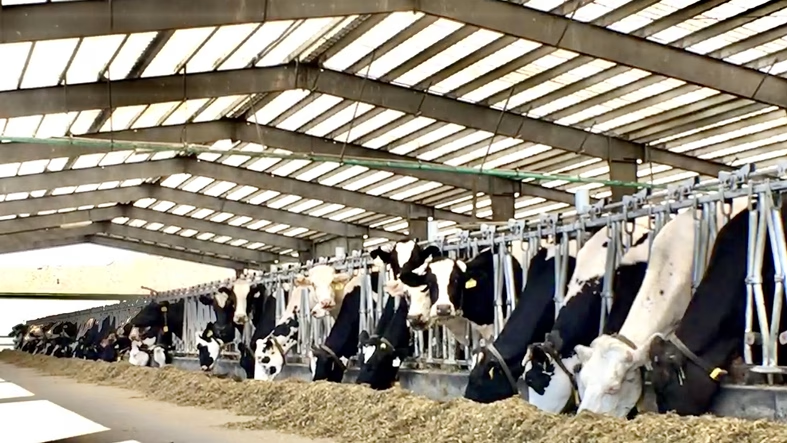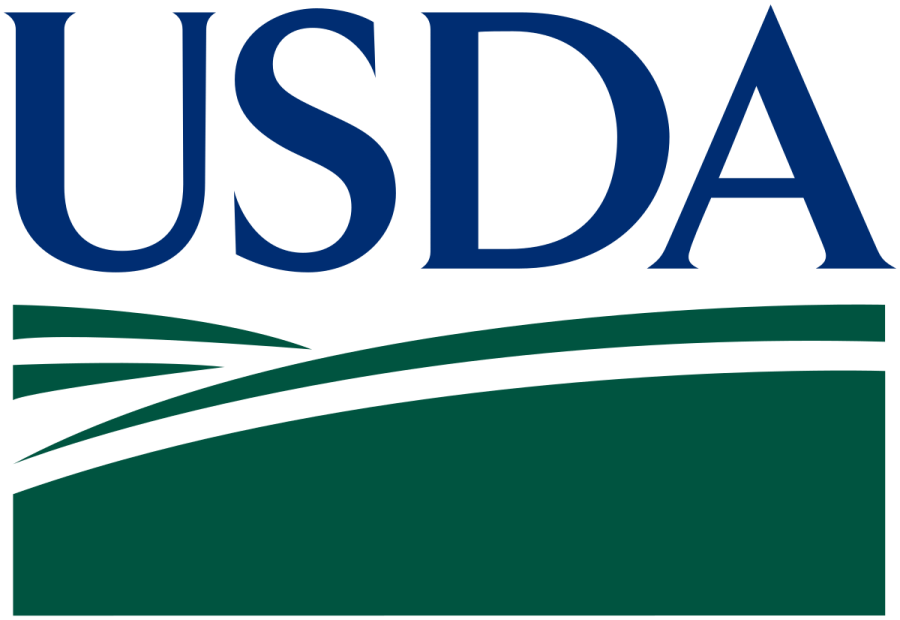Discover how U.S. dairy producers are handling high costs even with rising prices and strong demand in 2024. Can new solutions keep the industry going?

Despite the challenges of a dynamic 2024 marked by rising costs, the U.S. dairy industry continues to demonstrate its unwavering resilience. The industry is on a positive trajectory with solid demand and promising price forecasts. The latest World Agricultural Supply and Demand Estimates report from the USDA projects the average all-milk price at $21.60 per hundredweight nationally, an improvement from last year. Essential products like Cheddar cheese, dry whey, and butter are expected to increase in price, with imports and exports projected to rise compared to 2023, indicating the industry’s steadfastness.
Global Demand Surge and Rising Prices: A Crucial Juncture for the U.S. Dairy Industry in 2024
Global Demand Surge and Price Increases Position the U.S. Dairy Industry at a Crucial Juncture in 2024, when the industry is experiencing a significant increase in global demand and rising prices. As 2024 begins, the U.S. dairy industry finds itself at a crucial juncture of solid demand and rising prices at home and abroad. The latest World Agricultural Supply and Demand Estimates report from the USDA shows domestic consumer preferences increasingly favor dairy, while middle-class growth in emerging economies boosts global demand. As a result, the average all-milk price is projected to increase to $21.60 per hundredweight, improving over last year.
The USDA also notes that crucial dairy products like Cheddar cheese, dry whey, and butter are expected to see price hikes, with significant growth in both imports and exports. This robust global appetite for U.S. dairy secures the nation’s position in the international dairy market. It opens up new trade and market expansion opportunities, providing a positive outlook and reason for optimism.
The Resilient Rebound: Navigating Post-Peak Pricing Amid Economic Recovery and Rising Costs
The forecasted average all-milk price of $21.60 per hundredweight highlights the dairy sector’s recovery from recent economic disruptions, though it remains below the 2022 peak of $25 per hundredweight. Extraordinary market conditions, including a surge in global demand and supply chain issues, drove this peak. The current price stability at $21.60 indicates a return to sustainable yet profitable pricing. This pattern reflects ongoing recovery, allowing producers to tap into market opportunities despite higher input costs affecting overall profitability.
Expert Insights: Positive Market Dynamics Offer a Silver Lining Amidst Economic Pressures
An agricultural economist with the Mississippi State University Extension Service, Josh Maples, highlights the potential for further price increases in essential dairy products. He notes, “Dairy prices have strengthened significantly this year and are anticipated to rise further.” This optimistic forecast, which includes higher prices for products like Cheddar cheese, dry whey, and butter, as well as increased imports and exports, presents a promising market for U.S. dairy farmers, instilling a strong sense of hope and optimism for the future.
Examining Financial Pressures: The Multi-Faceted Challenges of Rising Production Costs for Dairy Producers
Dairy producers are navigating a complex web of rising expenses that challenge their economic stability. The need for equipment upgrades to keep pace with technological advances, climbing insurance premiums, and significant labor costs in a competitive market contribute to financial pressure. This situation is further compounded by increasing interest rates on loans, which many dairy farms rely on to finance their operations.
These layered cost increases highlight the complexity of maintaining profitability in today’s dairy industry. Producers’ resilience and adaptability will be crucial in navigating these financial challenges.
Regional Decline: Economic Pressures Force Downsize and Exit Among Dairy Farms in Mississippi and the Southeast
The decline in milk production across the Southeast, especially in Mississippi, reflects a regional trend of decreasing dairy farms and shrinking herd sizes. Economic pressures , including high production costs, market fluctuations, and the impact of climate change, have forced many dairy farmers to exit the industry or downsize.
The Role of Innovation in Tackling Production Costs: Jessica Halfen’s Strategic Research in Dairy Cow Nutrition
Jessica Halfen, the new dairy specialist at MSU Extension, spearheads efforts to mitigate high production costs through innovative research. She focuses on enhancing dairy cow nutrition and health with cost-effective dietary additives and natural compounds. By providing alternative feed options, Halfen aims to lower feed costs while improving herd well-being, easing the financial strain on dairy producers.
Halfen’s work is vital, especially for Mississippi dairies, which face production declines owing to long, hot summers. Her exploration of alternative feed sources represents a proactive step toward ensuring the sustainability and profitability of the region’s dairy sector.
“The objective is to explore alternative feed sources and identify new compounds that can reduce feed costs and enhance the overall well-being of dairy cows,” Halfen asserted. This research offers farmers immediate financial relief and strengthens the long-term resilience of dairy operations amid ongoing challenges.
Jessica Halfen Embarks on Revolutionary Research: Transforming Dairy Cow Nutrition with Alternative Feed Sources and Natural Compounds
Dr. Jessica Halfen’s research focuses on two main goals: exploring alternative feed sources and identifying new, beneficial compounds for dairy cow nutrition. Halfen aims to reduce the significant feed costs that challenge dairy producers by studying non-traditional, cost-effective feed ingredients. This includes assessing the nutritional value, digestibility, and overall impact of these alternative feeds on milk production.
At the same time, Halfen is devoted to discovering natural compounds that could enhance the health and productivity of dairy cows. Her research focuses on improving gut health, boosting immunity, and potentially increasing milk yield without incurring significant additional costs. These compounds range from plant-based additives to innovative probiotics, which, once verified through intensive studies, could offer sustainable solutions for reducing dependence on costly, traditional feed options.
Through her dual focus on alternative feeds and nutritional innovations, Halfen aims to equip the dairy industry with practical, science-backed strategies to improve efficiency and animal welfare. Her research addresses dairy farms’ economic challenges and promotes a more sustainable and health-conscious approach to dairy farming.
Confronting Climate Challenges: Tackling Heat Stress in Mississippi’s Dairy Industry
Mississippi’s extended hot summers significantly impact dairy production by exacerbating cow heat stress. These conditions reduce milk yield, fertility, and overall herd health, causing a notable decline in productivity during peak summer months. Managing heat stress is vital for sustaining milk production, leading producers to adopt cooling strategies like fans, misters, and shade structures. These innovations lower ambient temperatures, relieve cows, and minimize production losses. Nutrition optimization, incorporating feed additives that help cows cope with heat stress, is gaining focus.
Research at Mississippi State University is also developing heat-tolerant feed formulations and management practices. Jessica Halfen’s research explores alternative feed sources and natural compounds to enhance cows’ resilience to high temperatures. These efforts are crucial for improving welfare and sustaining farm profitability despite challenging climatic conditions.
Health Concerns Amidst Growth: Monitoring Highly Pathogenic Avian Influenza in Dairy Herds
In addition to economic and environmental challenges, the U.S. dairy industry is closely monitoring the situation with Highly Pathogenic Avian Influenza (HPAI) detected in dairy herds in Texas and Kansas. Authorities ensure that the commercial milk supply remains safe due to stringent pasteurization processes and the destruction of milk from affected cows.
The Bottom Line
While the U.S. dairy industry enjoys strong domestic and global demand and rising prices, it faces persistent production costs that jeopardize profitability. This balance of opportunity and challenge characterizes the sector today. The article highlights optimistic trends and increasing prices for products like Cheddar cheese, dry whey, and butter. Yet, rising costs for feed, equipment, labor, insurance, and loans heavily burden dairy farmers, especially in the Southeast. The decline in dairy farm numbers and herd sizes further underscores this strain.
Innovative efforts by experts like Jessica Halfen aim to improve dairy cow nutrition and production efficiency. Meanwhile, monitoring threats like the Highly Pathogenic Avian Influenza is vital to maintain milk safety. The future of the U.S. dairy sector depends on its ability to adapt, innovate, and ensure herd health. Stakeholders must support research and strategies to maintain dairy farm viability nationwide.
The resilience of the U.S. dairy industry lies in navigating these dynamics, ensuring it meets rising global and domestic demand while safeguarding producer livelihoods. Policymakers, consumers, and industry leaders must commit to innovation and sustainability to strengthen the sector against ongoing challenges.
Key Takeaways:
- Robust Demand: Both domestic and global markets are showing an increased appetite for U.S. dairy products, contributing to optimistic price forecasts.
- Rising Prices: The average all-milk price is projected at $21.60 per hundredweight, an improvement from last year, although still lower than the 2022 high of $25 per hundredweight.
- Producer Challenges: Despite strong market conditions, dairy producers are struggling with high production costs, including labor, equipment, insurance, and interest on loans.
- Regional Impact: Economic pressures have led to a decline in milk production in the Southeast, with fewer dairy farms and smaller herd sizes in states like Mississippi.
- Innovative Research: Efforts to improve dairy cow nutrition and health are underway, with new dietary additives and natural compounds showing promise in reducing feed costs and enhancing productivity.
- Health Monitoring: The industry remains vigilant about the threat of Highly Pathogenic Avian Influenza, with assurances from USDA and FDA about the safety of the commercial milk supply.
Summary:
The U.S. dairy industry faces challenges in 2024 due to rising costs and global demand. The USDA predicts an average all-milk price of $21.60 per hundredweight, with essential dairy products like Cheddar cheese, dry whey, and butter expected to increase. This global appetite secures the nation’s position in the international dairy market and opens up new trade and market expansion opportunities. The current price stability indicates a return to sustainable yet profitable pricing, allowing producers to tap into market opportunities despite higher input costs. Financial pressures include rising production costs, equipment upgrades, insurance premiums, labor costs, and increasing interest rates on loans. Jessica Halfen, a new dairy specialist at MSU Extension, is leading efforts to mitigate high production costs through innovative research.












